Found a total of 10000 related content
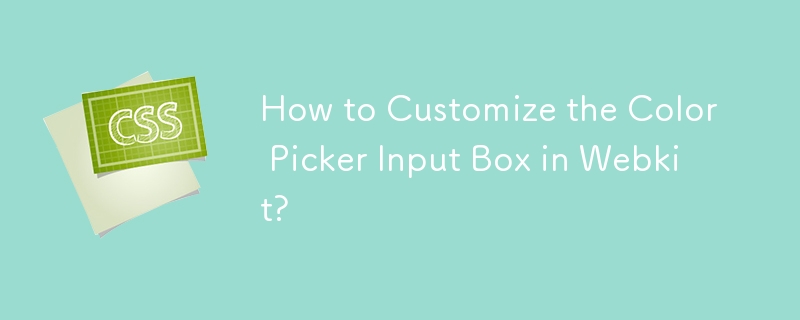
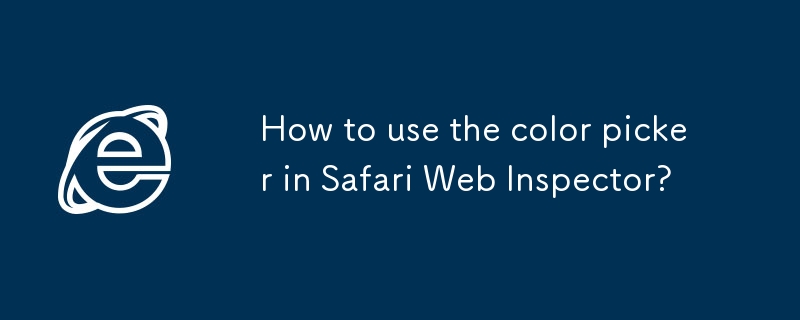
How to use the color picker in Safari Web Inspector?
Article Introduction:To use the Web inspector color picker function in Safari browser, 1. First, turn on the "Show the 'Development' menu in the menu bar" in the "Advanced" option of Safari preferences; 2. After opening the target web page, start the Web inspector through "Development" → "Show JavaScript Console" or the shortcut key Option Command I; 3. Find the color value (such as color or background-color) in the CSS style and click the value to enter the editing state. The system will automatically pop up the color selector that comes with macOS; 4. Select the color through the color panel to view the effect in real time. Press and hold the Option key to skip the input box and directly evoke the color plate. You can also use the straw worker to select the color palette.
2025-07-20
comment 0
460

How to use the color picker tool in Chrome DevTools
Article Introduction:To truly use the ChromeDevTools color selector, first open DevTools and click on the color properties, use the panel or input values to debug in real time, and then use the history and color collector to improve efficiency. The specific steps include: 1. Press F12 or right-click to check the element to open DevTools; 2. Click on the color square to start the selector; 3. Drag the slider or enter the value to adjust the color and preview it in real time; 4. Use the historical label to reuse the colors to maintain consistency; 5. Click the straw icon to enable the color picker to quickly pick up the page colors.
2025-07-22
comment 0
886
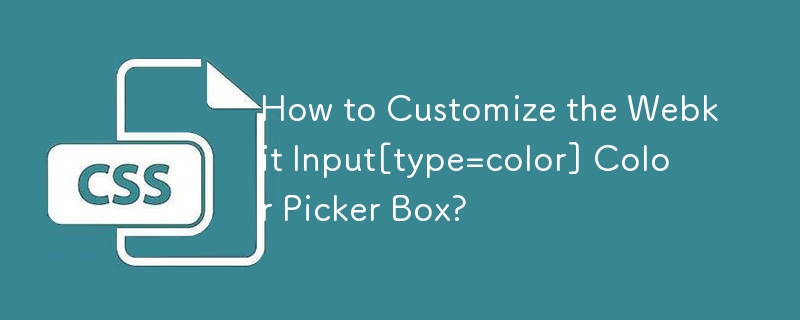

Creating an Interactive Color Picker with Svelte 5
Article Introduction:Creating an Interactive Color Picker with Svelte 5
Svelte 5 offers an elegant and efficient way to build interactive web applications, and a color picker is a perfect example to demonstrate its capabilities. In this blog post, we’ll explore how
2024-10-23
comment 0
1052

How to change VSCode terminal theme on Linux
Article Introduction:Modifying the VSCode terminal theme can be achieved by adjusting the configuration file or using plug-ins. First, open settings.json to add fields to set the foreground color, background color, cursor color and ANSI color; secondly, install plug-ins such as MaterialTheme or OneDarkPro to apply the built-in terminal color scheme; finally, check whether shell configuration such as .bashrc interferes with color output, comment out the relevant code if necessary and ensure that you use the default shell to run.
2025-07-07
comment 0
769
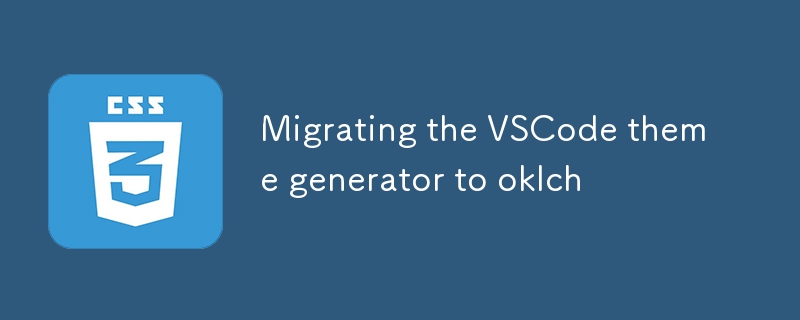
Migrating the VSCode theme generator to oklch
Article Introduction:TLDR: VSCode Themes Community now uses the OKLCH colorspace in the matching colors generation algorithm to randomize and manipulate colors and also has a oklch color picker to be used when adjusting the generated theme colors.
You can sneak a peek a
2024-12-29
comment 0
1121

How to use a color picker from my screen
Article Introduction:The color selection can be achieved through the screen color picker, which is easy to operate and practical. Common tools include Windows' "magnifying glass", ColorPicker, macOS's "digital colorimeter", and cross-platform online tools. When using it, press the shortcut key (such as Ctrl/Cmd C) to activate the straw tool, and click on the target area to copy the color value. Techniques include observing color changes and selecting the closest color, sampling multiple points to average, and using magnification preview to improve accuracy. Application scenarios cover UI design, CSS style, brand color extraction, etc., but attention should be paid to the impact of screen brightness and device differences on color accuracy. It is recommended to take colors in standard display mode and combine multiple devices or professional color calibration tools to ensure consistency.
2025-07-17
comment 0
427

Implementing a Color Picker Using HTML5 Input Type Color
Article Introduction:Using HTML5 tags can implement color selectors without complex code. The default value is #000000. It supports setting the value attribute to specify the initial color, and the return value is always in lowercase hexadecimal format. Listening to input or change events through JavaScript can obtain color values in real time and apply them to page elements, such as modifying background colors; in terms of compatibility, modern browsers support this feature, and old environments can detect support status and fall back to text input or introduce third-party plug-ins.
2025-07-14
comment 0
634
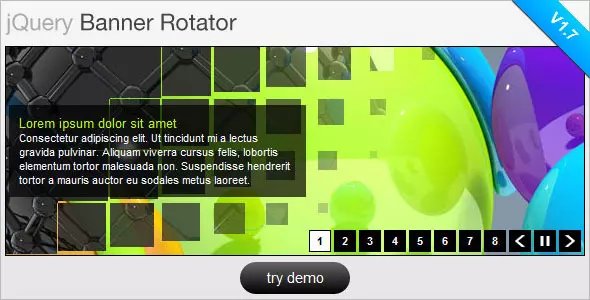
10 Premium jQuery Image/Content Sliders Plugins
Article Introduction:Ten powerful jQuery slide plug-ins are recommended to help you create a cool website!
The following are ten excellent jQuery slide plug-ins on Code Canyon. They are powerful and have amazing effects, which will definitely add a lot of color to your website. All pictures are copyrighted by their respective authors.
jQuery Banner Rotator / Slideshow
This jQuery banner carousel plug-in has a variety of cool switching effects. Thumbnails and buttons are easy for users to browse banners/ads. It also supports resizing and can be configured via plug-in parameters.
Estro – jQuery Ken Burns & Swipe effect
2025-02-24
comment 0
1005

How to customize a VS Code theme?
Article Introduction:Customizing VSCode themes can be achieved in three ways: 1. Quickly switch with built-in themes, select preset themes such as OneDarkPro or Dracula through the command panel; 2. Add colorCustomizations field to fine-tune the colors, such as modifying the editor background and foreground color; 3. Create extended deep customizations, generate project structure through the ThemeGenerator plug-in and adjust the color configuration in the JSON file, suitable for publishing or comprehensive customization. In addition, if the modification does not take effect, you need to check whether it is covered by the theme, whether the syntax highlighting is correct, or use official documents and online tools to assist in debugging and color selection. After mastering these methods, customize the theme
2025-07-18
comment 0
993

how to use adjustment layers for color grading in Premiere Pro
Article Introduction:Adjustment layers are the core tool in PremierePro for non-destructive color tuning and batch processing. It itself is transparent and has no content, but it can add LumetriColor, curves and other effects and only works on the lower track. How to use it is: 1. Create a new adjustment layer in the project panel; 2. Drag it above the target track on the timeline and add a color palette plugin. Common practices include placing it on the top layer when uniform tone, controlling the influence range of crop length, and superimposing multiple layers for basic and local color adjustments. Notes include: 3. Adjust the layer order to determine the priority of the effect; 4. Some plug-ins need to be rendered before they take effect; 5. The exported color space should be consistent with the color tuning settings; 6. Use the blending mode carefully to avoid distortion. In addition, it can be quickly migrated by copying layers or parameters
2025-07-24
comment 0
623

How to change the theme in VSCode?
Article Introduction:VSCode switching themes can be completed through the settings interface or shortcut commands without additional plug-ins. 1. Open the settings interface and search for "theme" to directly select the preset theme; 2. Click the color icon in the lower left corner to switch to dark/light color mode; 3. More themes can be searched through the expansion panel (Ctrl Shift X) and enabled in "ColorTheme" after installation; 4. Use the shortcut keys Ctrl KCtrl T to quickly open the theme selection panel to switch. Commonly recommended topics include OneDarkPro, Dracula, GitHubDark and MaterialTheme. Some topics need to be installed first.
2025-07-20
comment 0
936

How to fix Chrome not respecting dark mode on a website
Article Introduction:When Chrome does not respect dark mode, it can check the system and browser settings in turn, use developer tools to troubleshoot media query problems, and force enabled through plug-ins or experimental functions. First, make sure that both the operating system and Chrome's dark mode are enabled correctly; secondly, use the developer tools to check whether prefers-color-scheme:dark is effective; if it is still invalid, you can try the DarkReader plug-in or enable Chrome's experimental forced dark mode function; website developers should use standard media queries, avoid hard-coded backgrounds, and test multi-device compatibility.
2025-07-15
comment 0
766
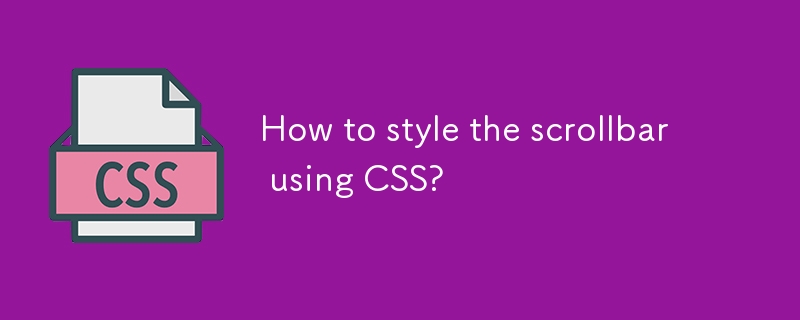
How to style the scrollbar using CSS?
Article Introduction:To add styles to scroll bars, it is mainly implemented through CSS pseudo-elements and specific attributes. 1. Use the ::-webkit-scrollbar pseudo-element to customize the scrollbar styles of Chrome, Edge, and Safari browsers, including the width, track and slider background, rounded corners, etc.; 2. Use the scrollbar-width and scrollbar-color attributes in Firefox to control the scrollbar width and color; 3. To ensure cross-browser compatibility, it is recommended to provide basic available styles for non-WebKit browsers, or introduce JavaScript plug-ins to enhance consistency; 4. In actual applications, you can also hide the scrollbar by setting display:none, and use
2025-07-23
comment 0
910

How to create a custom shortcode in WordPress
Article Introduction:The steps to create a custom shortcode in WordPress are as follows: 1. Write a PHP function through functions.php file or custom plug-in; 2. Use add_shortcode() to bind the function to the shortcode tag; 3. Process parameters in the function and return the output content. For example, when creating button shortcodes, you can define color and link parameters for flexible configuration. When using it, you can insert a tag like [buttoncolor="red"url="https://example.com"] in the editor, and you can use do_shortcode() to model it
2025-07-02
comment 0
475

How to integrate a third-party library like Chart.js in Vue?
Article Introduction:How to integrate Chart.js in Vue? First, install Chart.js and optional plug-ins, then create an encapsulated component to receive chartData and chartOptions parameters, and finally reference the component in the page and pass the data. The specific steps are: 1. Install Chart.js using npm or yarn; 2. Create the BarChart.vue component and render the chart in the mounted life cycle; 3. Introduce components and configure data and options in the page; 4. Pay attention to details such as responsive settings, instance destruction and color management.
2025-07-19
comment 0
469



















